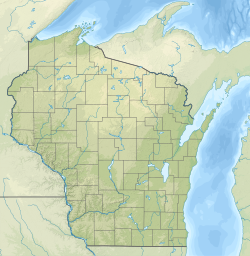2010 census
As of the census [19] of 2010, there were 807 people, 364 households, and 228 families residing in the city. The population density was 361.9 inhabitants per square mile (139.7/km2). There were 479 housing units at an average density of 214.8 per square mile (82.9/km2). The racial makeup of the city was 96.7% White, 1.2% Native American, 0.2% Asian, 1.4% from other races, and 0.5% from two or more races. Hispanic or Latino of any race were 1.6% of the population.
There were 364 households, of which 30.5% had children under the age of 18 living with them, 45.9% were married couples living together, 8.5% had a female householder with no husband present, 8.2% had a male householder with no wife present, and 37.4% were non-families. 30.5% of all households were made up of individuals, and 10.5% had someone living alone who was 65 years of age or older. The average household size was 2.22 and the average family size was 2.77.
The median age in the city was 43.4 years. 23% of residents were under the age of 18; 5.9% were between the ages of 18 and 24; 24% were from 25 to 44; 33.9% were from 45 to 64; and 13.1% were 65 years of age or older. The gender makeup of the city was 50.6% male and 49.4% female.
2000 census
As of the census [4] of 2000, there were 838 people, 378 households, and 230 families residing in the city. The population density was 373.9 people per square mile (144.4/km2). There were 487 housing units at an average density of 217.3 per square mile (83.9/km2). The racial makeup of the city was 98.69% White, 0.36% Native American, 0.12% Asian, and 0.84% from two or more races. Hispanic or Latino of any race were 0.72% of the population. 28.3% were of Italian, 16.1% Finnish, 12.4% Polish and 10.8% German ancestry according to Census 2000.
There were 378 households, out of which 28.8% had children under the age of 18 living with them, 49.2% were married couples living together, 8.7% had a female householder with no husband present, and 38.9% were non-families. 34.4% of all households were made up of individuals, and 16.4% had someone living alone who was 65 years of age or older. The average household size was 2.22 and the average family size was 2.86.
In the city, the population was spread out, with 24.6% under the age of 18, 6.1% from 18 to 24, 27.8% from 25 to 44, 23.3% from 45 to 64, and 18.3% who were 65 years of age or older. The median age was 40 years. For every 100 females, there were 87.5 males. For every 100 females age 18 and over, there were 93.3 males.
The median income for a household in the city was $29,219, and the median income for a family was $35,625. Males had a median income of $28,625 versus $19,375 for females. The per capita income for the city was $17,097. About 5.8% of families and 7.6% of the population were below the poverty line, including 11.1% of those under age 18 and 9.0% of those age 65 or over.






